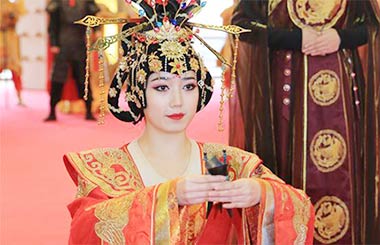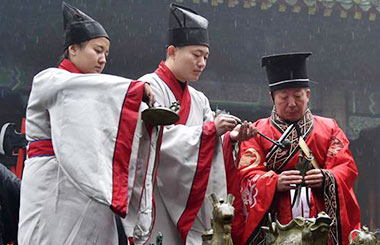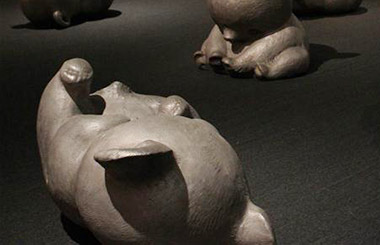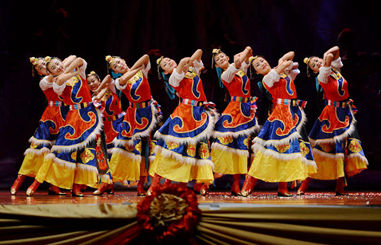Chinese opera celebrates Jianzhen's journey to Japan
Jianzhen reached Nara in the spring of 754. In 759 Japan's imperial court granted Jianzhen a piece of land in the western part of Nara. There he founded a school and also set up a private temple, Toshodaiji.
During his 10-year stay in Japan, Jianzhen introduced Ritsu Buddhism or monastic rules to Japan. He and the Chinese monks who traveled with him introduced Chinese elements to Japanese culture, including Chinese calligraphy, sculpture, architecture and medicine.
Jianzhen died in 763. A dry-lacquer statue of him made shortly after his death (and therefore thought to be in his likeness) can still be seen in Toshodaiji in Nara.
"I'm heartened by his magnificent spirit and willpower," says Tian Haojiang, who plays Jianzhen in the opera. Tian is the recipient of the Denver University Lifetime Achievement Award.
The stage was beautifully designed with pendant, elastic strips of white cloth, which easily served to represent sea, or a temple or a prison.
The main members of the opera's production team made several trips to Japan, including the route Jianzhen traveled from Kagoshima to Nara, to get a better understanding of the great monk.
"The story of Jianzhen's journey to Japan shows us determination, faith and courage," says the opera's composer, Tang Jianping. "I like to tell his story in an operatic way, an international language."
His musical message includes Japanese ballads. Tang uses two zheng (stringed plucked instrument)-a Chinese one representing Jianzhen's homesickness; a Japanese one for Yoei, who was homesick for Japan. Tang says the two zheng represent a kind of conversation between China and Japan.

















